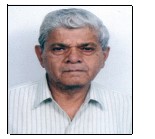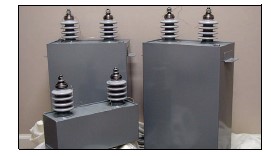
We get our electric supply as an Alternating Current AC voltage that
drives an alternating current. These alternate in a sine wave form at
the rate of 50 waves per second or 50Hz. This supply is termed as a
pure quality supply when the sine wave in which it fluctuates has a pure sine
wave shape, as given by equation I = Im Sin?
These days, there happen to be other sine waves, piggyback riding the basic
50Hz sine wave at speeds which are prominently multiples of 50Hz. These
piggyback riders are termed as harmonics. The prominent harmonics
produced by typical electrical appliances off the main supply are 2nd, 3rd,
5th, 7th, 9th, 11th, 13th, multiples of 50 Hz. They extend up to 25th
harmonics and beyond.
What damages can harmonics create?
Harmonic distortions can result in spurious frequent blow out of HRC Fuses and
capacitors. Insulation failure showing diminished Megger values over a period
is another indication of presence of harmonics. The costliest effects take place
in the sophisticated microprocessor based controls and equipments which will
behave randomly and unreliably.
The harmonics hurt mainly in two ways: They heat up electrical insulation
and reduce the life of electric cables, motors etc. The piggyback riders distort
the angular sine wave causing malfunctioning of static microprocessor
devices like electronic meters, sensitive micro-processor based controls etc.
With spread of microprocessor based equipments at all levels of accuracy and
sensitivity, the damages created by harmonics are getting into a bigger
threatening role day by day.
How and where are harmonics generated?
Our AC electric supply comes at 50Hz. It is used directly as in induction
motors-the largest group using electricity, as also in melting furnaces like
arc furnaces etc. Induction motors lower the power factor. It is corrected by
using power capacitors. The major use is now turning towards converting
A.C into D.C through converters and using this D.C directly in
electronic/electrolysis industries or reconverting it with invertors in AC with
an adjustable frequency. This is used in variable speed drives or VSD that is
coming up in big force. Converters used everywhere
primarily generate harmonics and are the major producers
thereof.
How do harmonics spread?
Installation A has a large DC drive - AC supply is first
converted into DC. This produces lots of harmonics. The
converter acts as a generator for harmonic which spread out
from there. The harmonic current will travel along the wires
which bring in AC power. They divide at junction points and
flow out. One path will be towards various electrical
equipments within the plant only. They enter the ground path
through the insulation of these equipments. From the ground
path they will return mainly to the neutral or grounded point
on the converter and complete the circuit.
A still another path will flow outwards from the point, through a power supply transformer, into the system grid. It
might flow through a neighboring transformer into a
neighboring plant and through its insulation to ground back to
the neutral earth point on the converter. The spread and
division of these harmonics will depend on the impedances to
the harmonic current flows offered by these paths.
 Point of Common Coupling (PCC)
Point of Common Coupling (PCC)
The critical point in setting limits on harmonic distortions is
point X. It is called the "point of common coupling" (PCC)-the
entry/exit point between installation A and the distribution
system. Limits set on harmonic distortions set at this point are
important.
Harmonics flowing within the part A are the A plant owners
outlook visa-vise the long terms safety of his equipment.
Harmonics flowing out from point A-point of common
coupling- PCC with the distribution and into the grid must be
limited both in voltage magnitude and current magnitude.
Limits on harmonic distortions at PCC - In the old days, convertors were thinly spread amongst other
electrical equipments. As a result although presence of
harmonics was known, it did not affect the quality of electric
supply much. Harmonic analysis of voltage wave form at the
PCC was measured. First limit A on harmonic presence
came on voltage vector.
- IEEE standard 529-1992 sets down acceptable limits on
harmonic voltages and harmonic currents in a standard
supply voltage or in a drawn out current. These limits have
been accepted internationally. Central Bureau of Water &
Irrigation of the Government of India has published similar
limits in their standards.
- Voltage Distortion Limits in the IEEE Std. 519, Table 11.1
specifies a limit of 3% on individual harmonic voltage and of
5% on total harmonic voltages for system voltages up to
69,000 volts.
- Effects of different individual harmonic percentages addnot
arithmetically but in an RMS way.
- Table 10.3 of IEEE std. 519 lays down Current Distortion
Limits for system voltages up to 69000V. These limits are
based on the ratio of Short Circuit Current/ Maximum
Demand Load Current at the PCC i.e. point of common
coupling to the network.
- For all harmonics, the individual Current Distortion
Limits vary from 4 per cent to a maximum of 15 per cent
as per ISc / IL ratios. For the total distortion of all
harmonics it varies from 5per cent to 20 per cent.
- For exact values, one must refer to the specifications.
Responsibilities of limiting harmonic distortions - The operator at installation A owes responsibilities to
himself. He has to take corrective measures in the interest of
efficient and long life operation of his own equipments.
- Installation A has neighborhood responsibilities.
Harmonics generated at "A" are hurting customer B.
Customer A must put harmonic filters at his own costs - even
if these harmonic don't hurt him within his own premises. If
he does not, Electricity Distribution Company can put a
filter and charge him adequately for installation and
maintenance. In extreme case, his supply could be cut off.
- The distribution company in its turn is responsible for
damages / inconveniences caused by harmonics to any of
their customers on account of passage of harmonics through
their wires. Irrespective of any customer's misbehaviors,
they have to put harmonic filters in their own system. They
do this already in transmission systems when required.
- Installation B might put in some harmonic filters on his
own-without bothering about where they are coming from.
This is a very welcome protective measure.
There is one slight but important precaution - he as well as any
harmonic filter planners must take. A harmonic filter is a direct
short circuit to harmonic voltages. As a result, the converter /
harmonic generator which was generating harmonics will
experience a direct short circuit across his converters. It might
burn out / damage converter apparatus. Converter supplier
should be duly informed on the proposed harmonic filter so that
he can increase the safe guards on his equipments.
Some important notes on carrying out harmonic surveys
- The unit under survey must switch on - as much of their
equipment as possible and create as near as possible
maximum demand load conditions at the time of harmonic
survey. Without this unduly large harmonic percentages will
be recorded.
- It is preferable to carry out harmonic survey simultaneously
at two overlapping points to determine the direction of flow
of the harmonic currents. It is not correct to advice that
installation B has high harmonics at his PCC and he must
correct it.
- The aim is to be to bring the harmonics within controlled limits
and not to wipe them out totally. That would be a folly.
[D. M. Tagare is Managing Director of Pune-based
Madhav Capacitors Pvt Ltd. He can be contacted on
dbt2360@dataone.in]